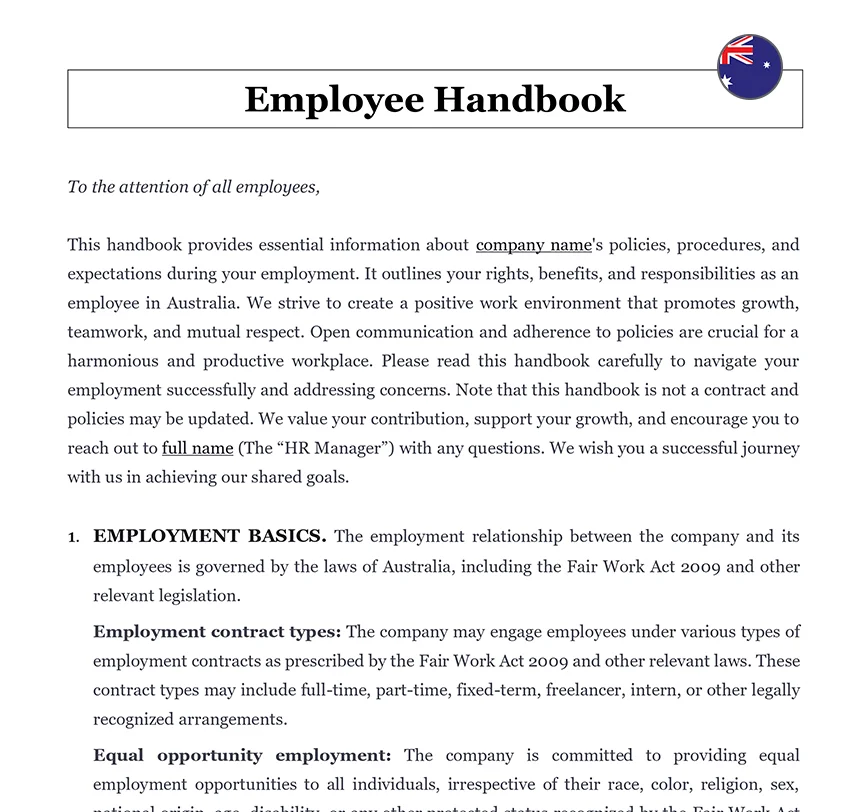The Importance of an Workplace Manual
A Workplace Manual also called an Employee Handbook is not just a set of guidelines; it’s a legally binding document that sets the foundation for a structured and compliant workplace. It outlines the company’s expectations, policies, and procedures, ensuring that every employee understands their rights and responsibilities. This comprehensive guide can protect both the employer and the employee by preventing misunderstandings and disputes. The Workplace Manual plays a vital role in fostering a positive work environment and maintaining legal compliance.
Establishing Clear Workplace Policies
A comprehensive Workplace Manual establishes clear workplace policies that guide the behavior and performance of employees. These policies cover various aspects such as:
1. Attendance requirements
2. Dress code expectations
3. Workplace conduct standards
4. Use of company property
Having these policies in writing helps to avoid ambiguity and ensures that all employees are held to the same standards.
Outlining Employee Rights and Benefits
The Workplace Manual should include a detailed section on employee rights and benefits, such as:
1. Leave entitlements (e.g., sick leave, annual leave)
2. Health and safety provisions
3. Retirement plans and superannuation details
4. Employee assistance programs
This section serves as a reference point for employees to understand what they are entitled to and what they can expect from their employer. It’s similar to how an Employment Contract details the terms and conditions of employment, ensuring that both parties are aware of their rights and obligations.
Addressing Health and Safety Regulations
Health and safety are paramount in any workplace, and the Workplace Manual must address these regulations thoroughly. This includes guidelines on workplace safety, reporting procedures for accidents, and the use of personal protective equipment (PPE). Employers have a legal obligation to provide a safe working environment, and employees should be aware of their role in maintaining safety standards.
Managing Employee Conduct and Discipline
An effective Workplace Manual provides clear guidelines on managing employee conduct and the disciplinary actions that may be taken in cases of misconduct. This includes:
| ➤ Procedures for addressing tardiness and absenteeism |
| ➤ Steps for handling breaches of company policy |
| ➤ Guidelines for conducting investigations and disciplinary hearings |
| ➤ Appeals process for disciplinary decisions |











